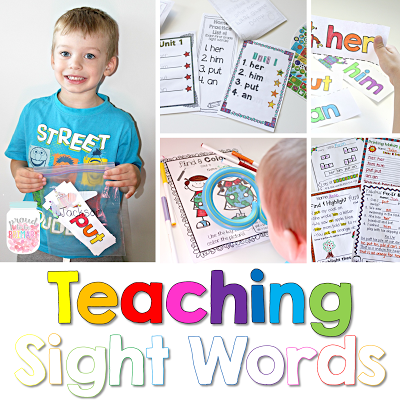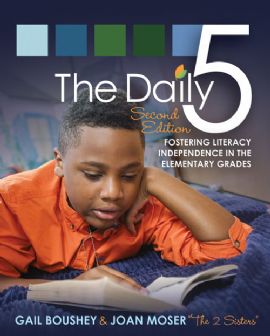Instructions, curriculum, and tips for teaching a word study program to young children in the classroom. Includes free morning message ideas for teachers.
Teaching a Word Study Program
In my first grade classroom, I’ve used a combination of strategies, programs, and activities throughout the year to teach my students phonics, words, and spelling in order to learn to read and write. Most years, I usually teach a grade 1/2 combined class so that means a lot of differentiation is needed to meet the needs of all my learners. This post will explain how I go about teaching a word study program.
I am a firm believer in a balanced literacy approach where I adapt my instruction every day to meet the needs of my learners in order for them to develop reading and writing skills. That being said, my program is not completely phonics-based. I incorporate a balance of phonics (word families, vowels), sight word instruction, as well as spelling and word study.
I will explain a few of the key components of my program today.
Sight Words: Why are SIGHT WORDS important?
I am a firm believer in a language arts program that teaches and reviews sight words. Sight words are those words that have a high-frequency presence in printed materials that children read. As children build their sight word recognition, they are able to read more books.
I have seen how beneficial it is to my early readers once they have learned new sight words. Their confidence goes way up, they enjoy reading books, and they feel successful!
Word Families: Why are WORD FAMILIES important?
Word families are chunks or patterns within words that rhyme. They provide predictable patterns to help emergent readers understand our language. Once students understand the 37 most common word families in English, they are able to decode 500 words!
I teach the patterns in word families throughout the year because they help my students develop their decoding and ability to sound out words. Once they learn those word families, they are able to decode so many words quickly. This puts them well on their way to reading and decoding success!
Spelling: Why is a SPELLING program important?
I use a spelling program in my classroom so every student has a list of words to learn and practice at home. My spelling program is mostly phonics based and each unit I teach reviews the short and long vowels, digraphs and diphthongs, blends, and more.
I use each week to review the phonetic concept that is present in that spelling unit. My students develop not only the ability to spell words but read and understand a new phonetic pattern or rule. They can then use those skills to read new material and write independently.
Daily Five
Word study and phonics lessons and activities occur frequently during our week. I usually have a designated time of the week to work on spelling, sight words, and word families. This coming year I plan on incorporating the Daily 5 system of word work, where my students will be working on something every day. With the Daily 5 system, you need to organize your literacy blocks throughout the day, instead of the whole class working on the same activities at the same time.
During this time, I pull small groups to work on word study concepts, while my students are completing their word work activities.
Morning Meetings
Morning meetings are a very important part of every day in my classroom. I use morning meetings to review and introduce new word study concepts.
Activities Completed Each Morning:
1. Introduce or review spelling words for the week.
I have the words posted in a chart and we review these words in different ways each day.
2. Complete our morning message.
I change the type of message every day. I write them related to what we are doing during the day or our current themes. Sometimes I leave words out, letters out, or vowels or consonants out for students to figure out and fill in as a class.
Here is an example of a morning message where I have left out consonants for students to figure out and fill in.
3. Work with word families and practice phonics skills.
We complete different activities each day to mix things up and reach all learners and styles. Some of the activities I like us to do together is brainstorm words that rhyme, fill-in sentences with words missing, and come up with sentences using the short or long vowel pattern we are practicing that week.
If you are interested in a copy of my morning meeting schedule for the week to use for teaching a word study program, click HERE to download!
Word Study Curriculum
I have created a sight word program called Learning to Read & Spell with Sight Words. I have created a resource to use when teaching each of the Dolch words lists: Pre-Primer, Primer, First Grade, and Second Grade. You can see how I run my sight word program using this program HERE.

I have used this complete curriculum in my classroom with great success. It has allowed me to differentiate for all my learners in a kindergarten, first, and second grade combined classrooms. It is sequential and we are able to continue at the end of one list (pack) and move on to the next list (pack) and materials after. The activities are the same, with a few variations and levels of difficulty.
Sight Word Resources
If you are thinking of purchasing the curriculum and want to see a sample, you can grab this FREE unit HERE which includes a week’s worth of materials and activities for your classroom.
To see the Learning to Read & Spell with Sight Words curriculum, click HERE.
Grab the complete curriculum in a giant BUNDLE HERE.
Phonics Resources
To teach phonics and rhyming word families, I have created a phonics program called Phonics are Fun. I have created a resource to use when teaching each of the short vowels. Check out how I teach word families using this program HERE.

I am excited to use this curriculum because it is comprehensive and I have all the materials I need in one place. I am able to differentiate for all my learners and have multiple activities at different times of the day.
To see the Phonics are Fun short vowel units, click the image below.
Grab the Phonics are Fun BUNDLE featuring 5 short vowel packs with materials to teach 19 word families at a discount.
What are the key components of your word study program?
More Ideas for Teaching
PIN























